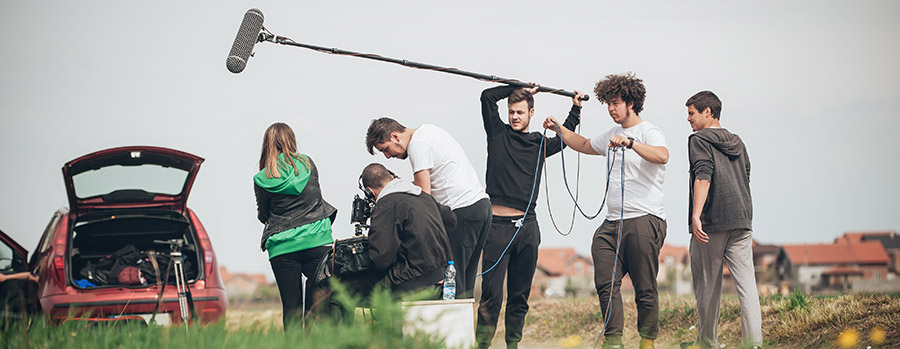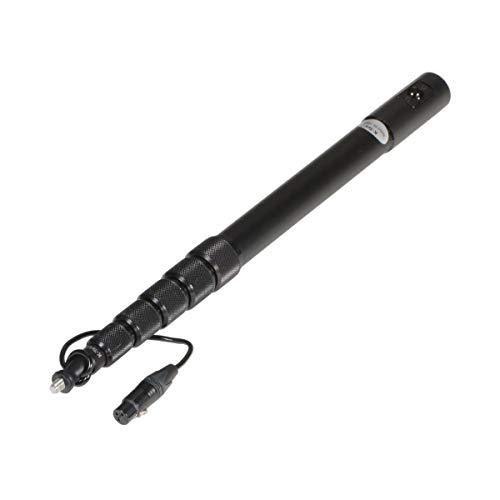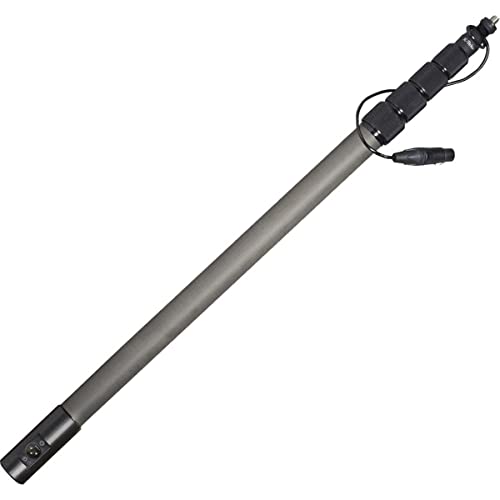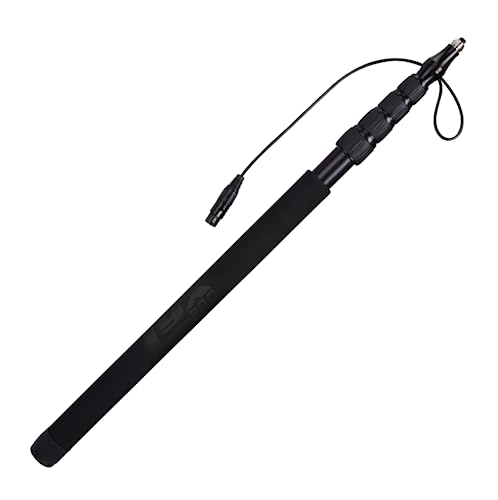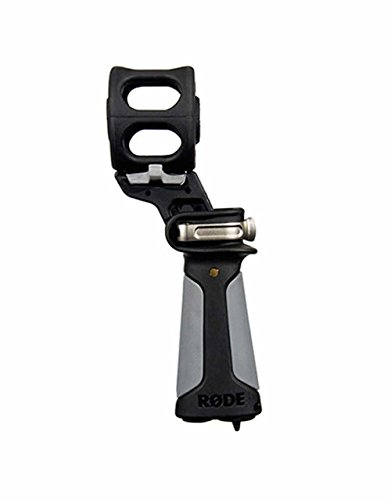You’re here because it’s time to buy a boom pole! We’ve got several good options to suggest but before we hop into the recommendations, let’s spend a moment considering:
What features should I look for in a boom pole?
Depending on your requirements you may weight various factors more than others. But generally speaking if you’re looking for the best boom pole for your needs, you may want to consider:
– Maximum length of boom pole: Some use cases demand particularly long boom poles, for instance like reporters at the White House who are often far away from the president at press availabilities on the White House lawn.
– Boom pole weight: This is an obvious one for anyone holding a boom pole for long periods of time by hand above their head. Even small differences in weight may make a big difference in fatigue at the end of the day. And keep in mind you’ll be adding a microphone and sometimes a cable on top of the weight of the pole itself.
– Minimum length of boom pole when collapsed: For travel or case purposes, you may want a boom pole that can collapse into a specific length.
– Internal XLR cable or external cable? Traditionally boom poles have simply been an extendable pole that a sound mixer would spiral their microphone cable around and hope that the cable didn’t slip. But newer boom poles have internal coiled XLR cables that plug into your microphone and provide an XLR output at the bottom (which you use your own XLR cable to connect to the sound mixer or camera). Internal XLR cables are becoming much more popular these days which eliminates a fair bit of cable management and handling noise, freeing the user to focus more on capturing good sound. Of course there is also the possibility that an internal XLR cable may wear down over time, requiring a replacement (cheap boom poles with internal XLR may not allow you to replace the cable while more expensive brands sell replacement internal cable kits).
– Is the XLR output on the bottom or the side? For boom poles with internal XLR cables, does the XLR output at the bottom of the pole exit at the bottom or the side? Typically cheaper boom poles will exit at the bottom which can be inconvenient if you want to comfortably rest the bottom of the pole on the ground in between takes. More expensive boom poles often have a side-exit for the XLR output port which can be more convenient.
– What material is the boom pole made out of? Cheaper boom poles tend to be made of aluminum rather than carbon fiber or graphite. The more expensive boom poles are made of the latter two materials because they’re lighter which can make a big difference if you’re holding a long pole up for extended periods of time. Another difference is that aluminum will dent while carbon fiber/graphite may crack (though if you treat your gear extremely well neither should be an issue). Pro sound mixers tend to swear by the lighter graphite or carbon fiber boom poles and look down on aluminum ones as cheap and heavy.
All right, with all these factors in mind, here are some of our picks.
The best boom poles for indie filmmakers
K-Tek KE79CCR Avalon Series Aluminum Traveler Boom Pole
This is a midrange boom pole with internal coiled XLR cable. You get some cost savings because it’s made of aluminum instead of the more expensive carbon fiber or graphite but it also has a side-exit XLR port for the internal cable so you can rest the bottom of the boom pole on the ground when you’re not shooting. Although this isn’t the longest boom pole, extending to 6 feet and 7 inches maximum, it is able to fold into a strikingly compact 1 foot 8 inches when collapsed, making this a great boom pole for travel. Weight: 1.6 pounds without microphone.
K-Tek KEG-100CCR 5-Section Carbon Fiber “Traveler” Avalon Series Boom Pole
If you need a boom pole that collapses into a compact 2 foot 2 inch size that extends to an incredible 8’9″ reach, this is one of the best boom poles for the job. This pole comes from K-Tek’s super-portable traveler line and is made of carbon fiber which means it’s lighter weight than even some shorter poles (1.4 pounds without microphone). The internally coiled XLR cable is side-exit so it can be easily rested on the ground in between shots.
K-Tek Avalon Graphite KEG150 Boom Pole
If you need one of the longest boom poles that’s lightweight, look no further than the K-Tek Avalon KEG150 series pole. It’s made of graphite so it weighs a mere 1.9 pounds before you add a microphone, making it one of the absolute lightest long boom poles available. This boom extends all the way from about three and a half feet up to 12 and a half feet! It features coiled internal XLR cable with a side-exit too, as you would expect from a higher end boom pole like this one.
LyxPro MPL-20 Boom Pole with Internal Cable
This model is a basic no-frills internal cable boom pole for shotgun microphones. It telescopes from 2.4 feet up to 9 and a quarter feet and has an internal cable (bottom exit, not side). It features a soft hand grip and 5 adjustable sections with locking rings to make the pole go longer or shorter. This model is made of aluminum and weighs 1.6 pounds.
Movo CMP-25 8.2′ Telescoping Carbon Fiber Boom Pole
Here’s another lower end boom pole that still includes an internal XLR cable and is made of carbon fiber (weighing in at 1.59 pounds for a maximum reach of just over 8 feet). This model comes with a handy protective soft case that it fits into when it’s folded up to its minimum length of around 3 feet. The XLR cable output is bottom exit on this model and it has a load capacity of around 6 pounds.
Other useful accessories for boom poles
Boom Pole Case
If you’re traveling with a boom pole, it’s important to protect it. This is a generously sized boom pole case that can accommodate boom poles up to 35″ in length. This bag is compatible with a variety of boom poles from Rode, Neewer, Lyxpro, and On-Stage.
Auray Boom Pole Holder
This is a standard boom pole holder which you can mount on a c-stand to suspend a boom pole and microphone above a person for an extended period of time without having to hold it yourself. Boom pole stands or holders can be particularly useful if your talent is just in a static spot such as seated in an interview or a similar type of setup. This boom pole holder is designed so it’s easy to quickly remove or re-mount your boom pole to the stand so that you aren’t left fiddling with screws in case you need to quickly switch to a handheld setup. To use this boom pole holder, you’ll also need a clamp for the c-stand, the c-stand itself, and sandbags for safety so it doesn’t tip over.
Coiled XLR cable
If you’re connecting the boom pole into a body worn sound mixer as many location sound recordists do, using a coiled XLR cable to connect the boom pole internal XLR output to your mixer can help reduce cable management while you’re capturing great sound. Because coiled cables have some “stretch” to them, you don’t need to be taking up cable constantly and letting it out as you switch between setups. Because coiled XLR cables have are springy they’re also less of a trip hazard in some scenarios.
Rode PG2 Pistol Grip ShockMount for Shotgun Mics
< Shock mounts for mounting shotgun mics on boom poles come in many styles but this pistol grip style is widely used. It accommodates many sizes and lengths of shotgun microphones. Using a high quality shock mount for your shotgun microphones and boom poles will help eliminate the handling noise of your hands holding the pole itself and adjusting your grip.
See also: The best windscreens for shotgun microphones – foam, blimps, dead cats & more
